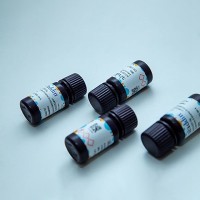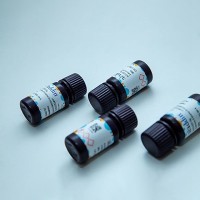Enzymatic Fluorescence and Biotin Labeling of Primers for PCR Sequencing
互联网
413
The emergence of cycle sequencing ( 1 ) as a powerful alternative to conventional isothermal methods has facilitated the manipulations involved in sequencing protocols in general, and is of value for the sequence analysis of PCR products, in particular. Using radioactive labeling techniques, it has generally been accepted that 5′-terminal phosphorylation of the primer prior to the sequencing reaction ( 2 ) is the most reliable approach to obtaining sequence information. However, the combination of nonisotopic detection with cycle sequencing offers several alternatives. The incorporation of the fluorescent label into the nascent DNA has been approached from several angles. At present, one may consider three sources of fluorescence (Fig. 1 ), irrespective of the principle governing the design of the sequencing hardware:
| 1. |
Label attached at the 5′-terminus of the primer ( 3 ).
|
| 2. |
Label incorporated as an appropriately chemically modified dideoxy-terminating nucleotide ( 4 ).
|
| 3. |
Internal labeling of the growing chain using F-dATP during the elongation reaction ( 5 ).
|
Fig. 1. Source of label during fluorescent DNA sequencing. The fluorescent tag is indicated schematically by a star.









